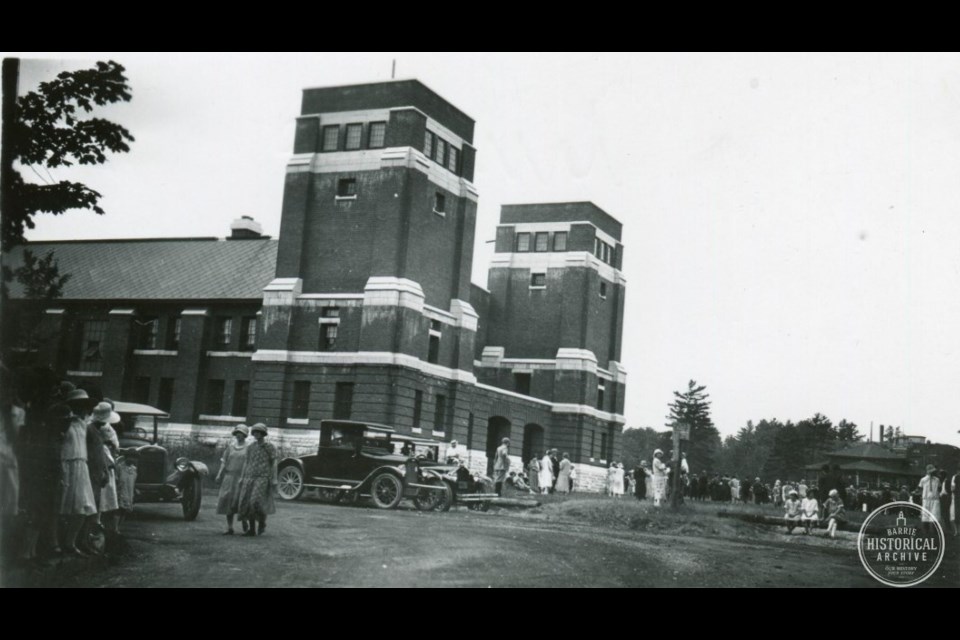Editor's note: The following is the second installment in a series. To read Part 1, click here.
The ink was barely dry on the Barrie Examiner piece lauding the patriotic spirit of the Claytons of town, who had two serving sons, when a third son enlisted to fight in the Great War.
When 27-year-old Gerald Clayton arrived at Camp Niagara in the summer of 1915, his brothers Bergin and Fred were completing their training and had not yet sailed for Europe.
None of them really knew what they faced on the battlefields.
By early 1916, all three were fighting for their country, their comrades, and their very lives in various hellish places across France and Belgium.
Bergin survived being shot on two different occasions while Fred was gassed just before Christmas of 1916 and again in February of the following year.
Gerald Clayton arrived in England at the end of 1915, and was immediately stricken with bronchial pneumonia. Upon his recovery, Gerald was sent to France where it's likely that he struggled with what he experienced.
In May 1915, Gerald Clayton was confined for drunkenness while on duty. He was tried, convicted, reduced in rank, and then released on May 30. Two weeks later, he was shot in the shoulder, chest and head.
After six months in various hospitals in England, Gerald Clayton recovered. His rank was returned to sergeant, but was reduced again after he was absent without leave.
What or who inspired these three young men to risk their lives in faraway places like France or Belgium?
The possibilities are many, but an elder brother had already been involved in daring exploits for several years. Perhaps his adventures inspired the siblings.
Charles Clayton was 19 years old when he left Barrie for Hamilton, Mont., in the United States. He secured employment as a timekeeper with the Great Northern Railway in 1906.
It was helpful that Charles’s uncle, Patrick Shannon, had earlier gone out to Montana and was working as superintendent for the sprawling 22,000-acre Bitterroot Stock Farm on which Charles came to live.
In 1911, Charles Clayton became a naturalized U.S. citizen and soon after joined the U.S. Cavalry. When events in Mexico spilled over in to the United States, Charles found his career path forever changed.
Francisco ‘Pancho’ Villa, was a controversial general during the Mexican Revolution which spanned the decade between 1910 and 1920. Villa was a farmer’s son who rose to become the governor of the Mexican state of Chihuahua. Coups, guerrilla warfare and assassinations saw him briefly form a coalition government that was recognized by the U.S. government.
At one time, Villa was being supplied with weapons by the U.S., and spent a short time in exile there. Not wanting to give up power in his homeland, Villa returned to Mexico.
Things got ugly in 1915. Villa began to attack Americans on Mexican soil and to conduct some deadly raids into Texas.
As Villa became an increasing threat, the U.S. Cavalry became a larger presence at the border. American President Woodrow Wilson called up 10,000 troops after a particularly deadly raid on the New Mexico town of Columbus.
For two years, Charles Clayton and his U.S. Cavalry comrades sought Villa high and low, even pursuing him into Mexico itself, but he was never captured.
Afterwards, Gerald made a career out of the U.S. Marine Corps.
In 1915, after the departure of Gerald Clayton, only one son remained at home in Barrie. Gratton Clayton was 17 at the time, but that did not stop him from enlisting in November of that year.
As his birth had never been registered, his trip overseas was delayed, but not cancelled. Gratton Clayton sailed for England on May 1, 1917.
If Gratton was seeking the full war experience, he certainly got it. He contracted German measles not long after reaching England and his feet suffered so badly on long marches that both big toenails had to be removed.
In late 1918, Gratton was shot in the left knee and spent four months in hospital. On the day of his discharge, he came down with Spanish influenza and remained in bed for another month.
All five Clayton boys lived to return home.
Each week, the Barrie Historical Archive provides BarrieToday readers with a glimpse of the city’s past. This unique column features photos and stories from years gone by and is sure to appeal to the historian in each of us.

